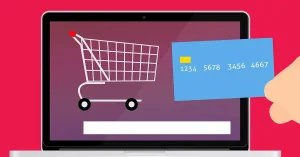In the early days of the internet, businesses were slow to take advantage of the power of the net to attract customers. You needed experts to build websites and entire teams to maintain servers, as well as coordination with suppliers, and a whole boatload of cash to make it all happen.
Nowadays just about anyone, anywhere in the world can start a business online regardless of qualifications or financial constraints. This makes setting up a small online business one of the most viable ways to establish an income stream that’s easy to maintain and scale. If you’re looking for a simple way to supplement your monthly income, or get your name out there in the world of e-commerce, here are the best small online business ideas that require minimal investment, and how to get started.
Some Things to Think About Before You Start
Setting up a business online is never a complete walk in the park, but if you have a grasp on some crucial points you’ll be able to keep the whole thing running smoothly. These questions can help you choose the online business that’s best for you:
- What skills do you have that you can monetize?
A great starting point when deciding what kind of business to set up is to evaluate your current skills and find out which ones people are willing to pay for.
- What’s your starting budget, and how much would you like to make?
There’s no need to take out a business loan to start an online store, but you will need some funds to purchase materials, a URL, and set up your site. As a tip, make sure to maintain good accounts from the very start to help you in the long term.
- How much time do you want to dedicate to your business?
If you’re already working, or have other engagements, then you don’t want to be juggling an online business that requires a lot of hands-on work. In this case, something relatively relaxed such as print on demand might be best for you.
- Would you like to create your own online presence or use third-party sellers?
It couldn’t be easier to set up an online business thanks to sites like Amazon and Etsy, where you can sell your product through a pre-made interface. While it’s a lot less hassle, these sites will take a portion of your profit in exchange for hosting your business. It’s a steep learning curve and can put your starting costs high, but creating your own professional site for your business is often more marketable, manageable, and profitable.
Small Business Ideas to Set Up from Home
Sponsorships
By starting a blog, or creating content for sites like YouTube or Instagram, you can build an audience that, once big enough, you can use to market yourself as a partner for brands looking to sponsor micro-creators. This is a great idea for those with a minimal upfront investment as it requires no money to set up, but the likelihood of making it big straight away is low, so it requires some patience.
By choosing a niche such as travel, pets, or makeup, and utilizing tags and SEO effectively you can gain followers easily. While it is particularly time-consuming to create content that will make you stand out, if you dedicate enough time to your online presence and audience it’s more than possible to create a relatively large community. Then begin reaching out to brands in your niche for opportunities to provide sponsored content or affiliate links.
How to scale your business: Sponsored content is a great stepping stone to social media management. Market yourself to a business’s social media pages as someone who can help them achieve a large audience as you’ve already done.
Online Courses
There are millions of people looking online to further their education and qualifications to buff up their CVs. If you’ve got the know-how, creating and selling a course through your site requires an initial bout of work and website costs, but after completing this you can simply watch the money roll in.
You may want to try a few online courses in your chosen subject matter to see how they work, and how long you’d like your course to be. Then pen your course outline, the material for each lesson, and some homework activities for any keen students, and bring your course online.
How to scale your business: Create a membership area that requires a monthly subscription to your site. A members-only area might have a new lesson every month, interviews with industry leaders, or direct contact with you for any extra help your students might need.
Virtual Assisting
Being a virtual assistant will usually involve working directly with an individual or team in an existing business to organize schedules, take minutes during meetings, and field calls, and complete other such administrative duties. You have complete control of your pricing and time, and the work is always remote.
But, freelancing businesses will usually take longer before they gain enough traction to become a viable income stream. Cold e-mailing small businesses and offering your services, with a link to your site that details why you’re the best option for those seeking out a virtual assistant, is a great way to start.
How to scale your business: This is one small online business that offers those great at marketing the opportunity to grow by employing other freelancers. Or, once you have the necessary experience you can move into consulting with those looking to set up their own freelance businesses in this niche.
Print on Demand
Print-on-demand businesses are perfect for artists and creatives who want to monetize their work. By partnering with a supplier of ‘white-label products’, plain products such as mugs, t-shirts, phone cases, bags, etc, you won’t need to purchase inventory beforehand.
From intricate designs to relatable quotes or memes, you can print just about anything onto your products. While customers will find and purchase your products on your site, the supplier will handle the printing and shipping. Usually, you’ll only pay for the products from the supplier once you’ve sold them, so profits are available straight away with very little work.
How to scale your business: Design and market subscription boxes that contain a few fun items or art pieces every month. Alternatively, once you have the funds you can move away from third-party suppliers altogether and purchase your own printing equipment and inventory.
Drop-shipping
Just like print on demand, drop-shipping involves working with a supplier to market products in a particular niche to your customers, without maintaining an inventory or stock. Physical businesses will purchase their stock from a wholesaler, mark up prices to ensure a profit, and use their customer base to sell the products - drop-shipping is much the same, just through your online site.
Drop-shipping requires your attention for a few parts of the process, like seeking out relevant suppliers, marketing the products well on your site so customers are more likely to purchase from you than seek out wholesalers themselves, ordering from the supplier directly to the customer, providing the customer with delivery information, and maintaining good customer relations if there are any problems along the way.
How to scale your business: Scaling a drop-shipping business is incredibly easy, simply add more products to your offerings. Eventually, you can work with suppliers and apps that automate the process for you to cut out some of the more time-consuming parts of drop-shipping.
Some Extra Tips
- Have a business plan…
It doesn’t need to be squeaky clean straight out of the gate, but having a rough idea of where you want your business to be in terms of profit and brand reputation each month is a good way to stay on track for success. Balance ambition with realism, and know that your plan can and probably will adapt over time as you become used to running your business.
- Stay on the right side of the law…
Even if your business is of the small online kind, you’ll likely still be subject to certain restrictions that ensure your customers are kept safe and happy. Make sure you read up on the regulations for your particular site and products, and for online commerce, in general, to make sure everything is legal. This is especially important if you’re planning on selling foodstuffs or health and beauty products.
- Keep an eye on your site…
The most important part of any online business is your website. You’ll need somewhere to host your sites, such as WordPress or Wix, so make sure that the host site is easy to use if you’re building the website yourself. Alternatively, if you have a little bit more in terms of starting finances, you can hire a professional website designer to set up your page.
- Become a master of marketing…
Following on from the above, your site is useless if people can’t find it. A built-in blog is a great way to get on top of SEO and make sure customers will come across your products. Niching down, creating a cohesive and trustworthy brand, and having a USP (unique selling point) will assist with marketing, and help keep customers coming back. Social media is excellent to market your site, but remember you’ll likely have to dedicate a significant amount of time to this. If all goes well you can purchase ad space on other sites, or run an online ad campaign to tap into large audiences of potential customers.
- If at first, you don’t succeed, try again…
If you’re a complete beginner when it comes to business then make sure to do your research, but the best way to figure out what works for you and your site is to simply get started. Throwing yourself in at the deep end may be a little too ambitious, so keep it simple at first so you can learn the ropes with no stress, and never forget that the best way to succeed is often to fail. By coming up against challenges and working around them you’ll learn along the way, so good luck, and happy selling.
Sources
https://www.shopify.co.uk/blog/low-investment-business-ideas
https://www.wix.com/blog/2020/04/how-to-create-an-online-course/
https://kajabi.com/blog/the-ultimate-guide-to-creating-and-selling-online-courses
https://www.ecommerceceo.com/learn/what-is-print-on-demand/
https://www.wholesaleted.com/10-steps-to-take-before-you-start-a-print-on-demand-business/
https://www.bigcommerce.com/articles/dropshipping/start-a-dropshipping-business/
https://kinsta.com/blog/how-to-monetize-a-blog/
https://www.thinkific.com/blog/how-to-monetize-content/
https://gatheringdreams.com/how-to-become-a-virtual-assistant/





















Add comment